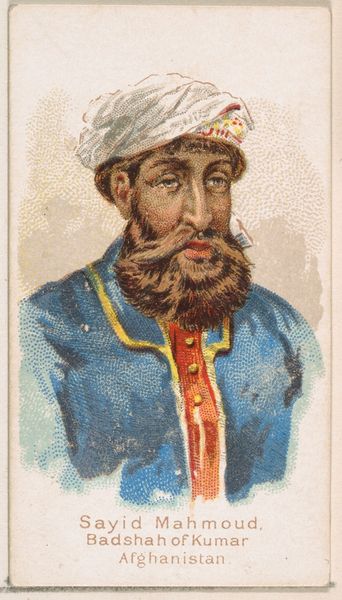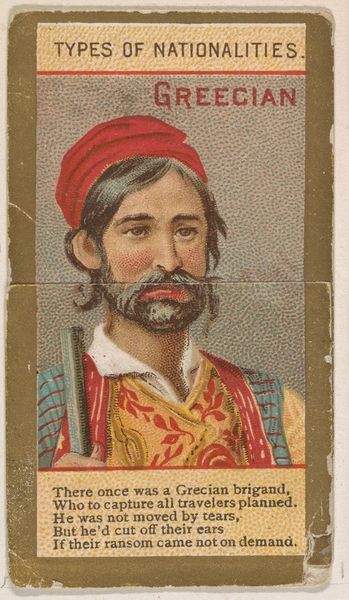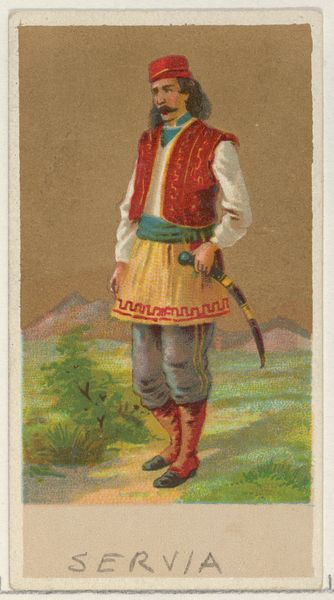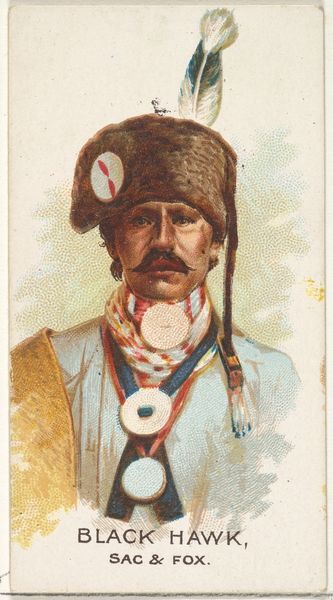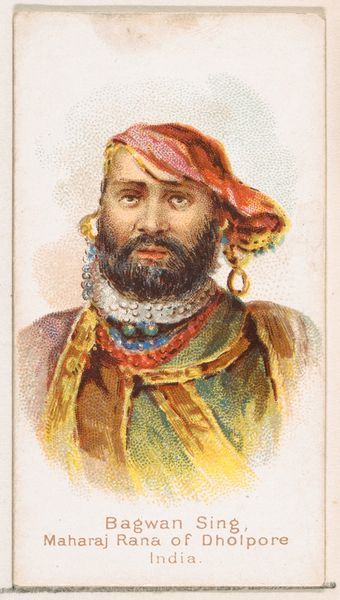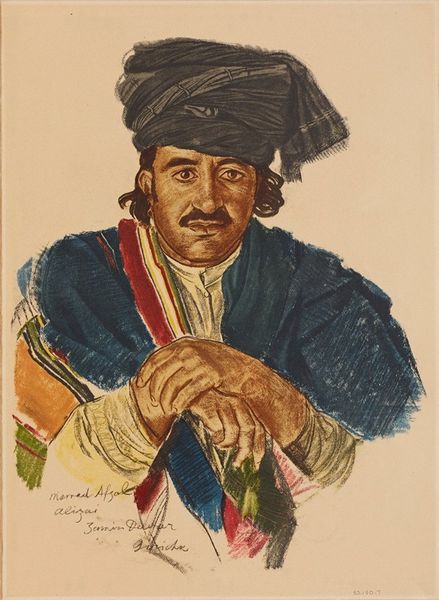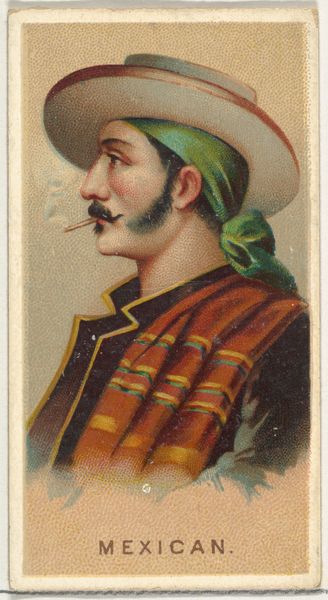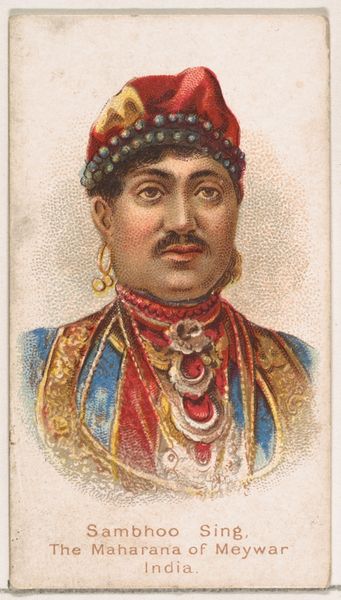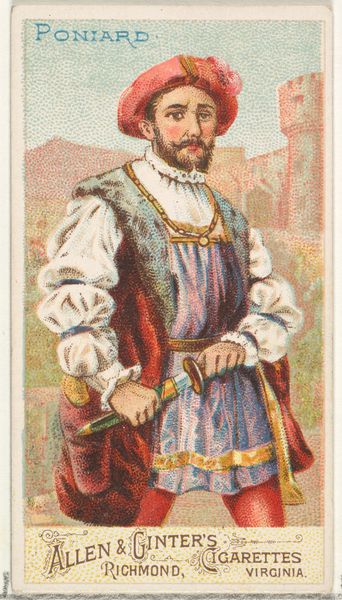
Hujat Khan, Mahomedan Khan, Afghanistan, from the Savage and Semi-Barbarous Chiefs and Rulers series (N189) issued by Wm. S. Kimball & Co. 1888
0:00
0:00
drawing, graphic-art, lithograph, print
#
portrait
#
drawing
#
graphic-art
#
lithograph
# print
#
realism
Dimensions: Sheet: 2 11/16 × 1 1/2 in. (6.8 × 3.8 cm)
Copyright: Public Domain
Editor: Here we have a lithograph print from 1888, created by Wm. S. Kimball & Co., titled "Hujat Khan, Mahomedan Khan, Afghanistan." It is one of a series of "Savage and Semi-Barbarous Chiefs and Rulers." I'm immediately struck by the…frankness of the title paired with the rather romanticized portrait. How should we interpret this contrast? Curator: This series provides a potent snapshot of the late 19th-century cultural mindset. It presents an overt example of how Western society viewed and classified individuals from different regions of the world. The term "savage" reflects the biases and imperialistic tendencies of the time. Note the inclusion of details in the depiction of Hujat Khan's clothing and features, likely aimed at constructing a visual image that confirmed pre-existing Western notions about Afghan leaders. Editor: So the title and the image work together to reinforce a particular viewpoint. Was there a specific intended audience for these prints? Curator: These prints were, in fact, trading cards included in cigarette packs. They were circulated widely among the general public, shaping and reinforcing popular perceptions about other cultures. The accessibility of such imagery normalizes such biases in everyday life. What impact do you think the distribution method might have had on its reception? Editor: Distributing these through cigarette packs... It meant exposure to a much wider audience than a gallery or museum, and suggests a casual acceptance of the depicted views. It seems almost like propaganda in retrospect, intended to shape public perception to favor imperialist ambitions. Curator: Precisely. The casual nature of distribution contributed to the unquestioned acceptance of the depicted biases. Think of the power dynamics implicit in labelling someone "savage." This wasn’t just about conveying information; it was about solidifying a Western worldview. Editor: I see, now, how seemingly innocuous imagery can actually be quite loaded with political meaning and influence. Thanks! Curator: It is vital to analyze the historical context of such works. Doing so reveals how art reflects, reinforces, and even perpetuates power structures. Food for thought.
Comments
No comments
Be the first to comment and join the conversation on the ultimate creative platform.
